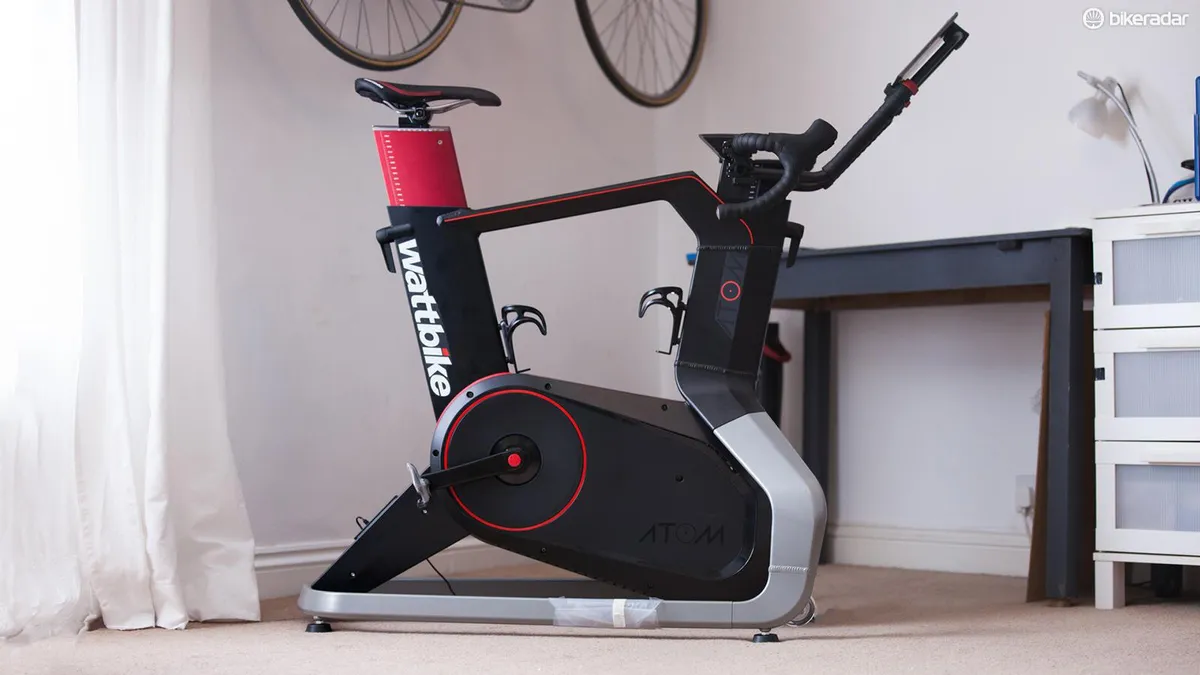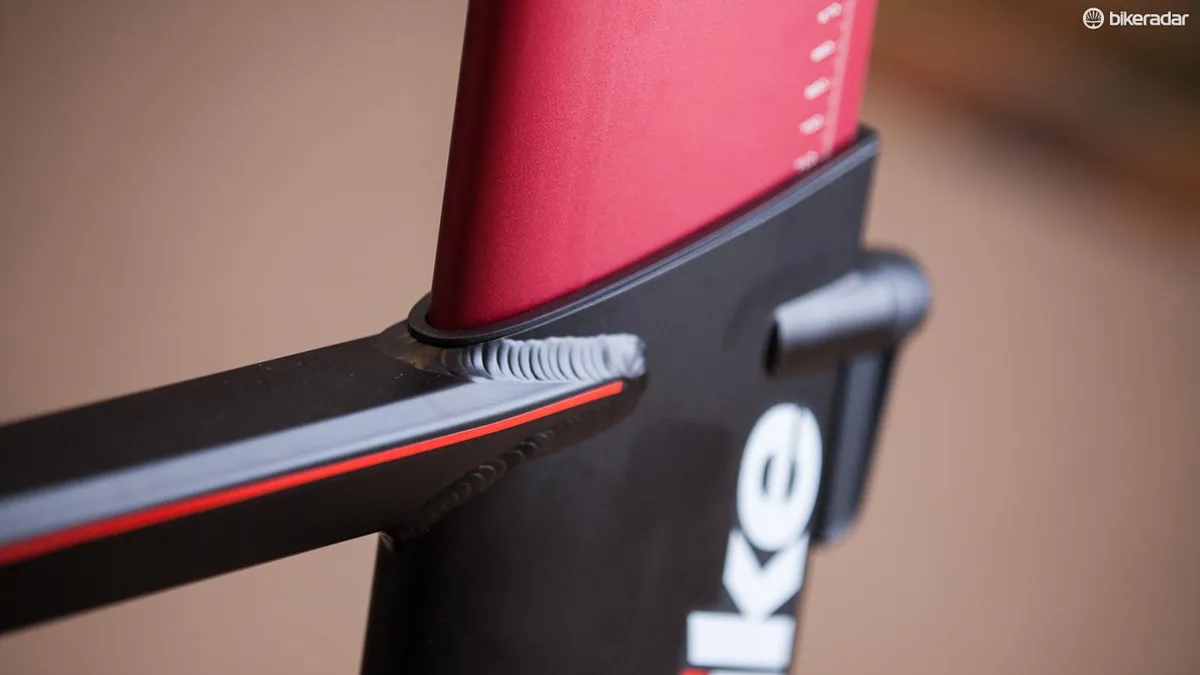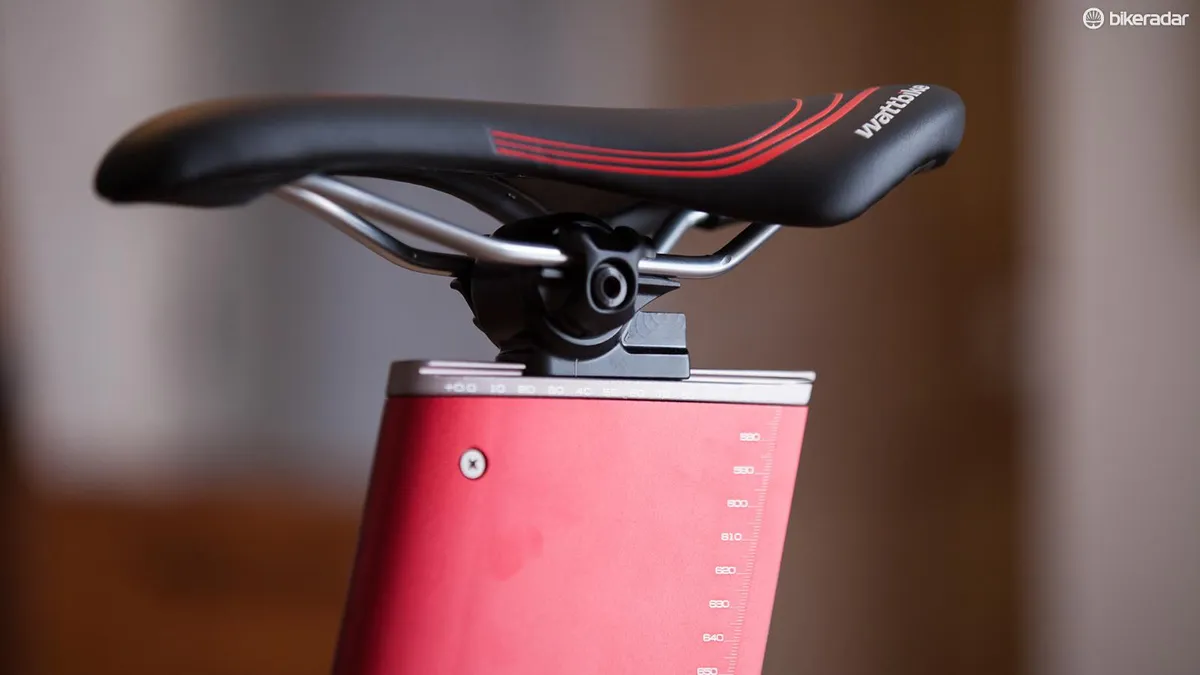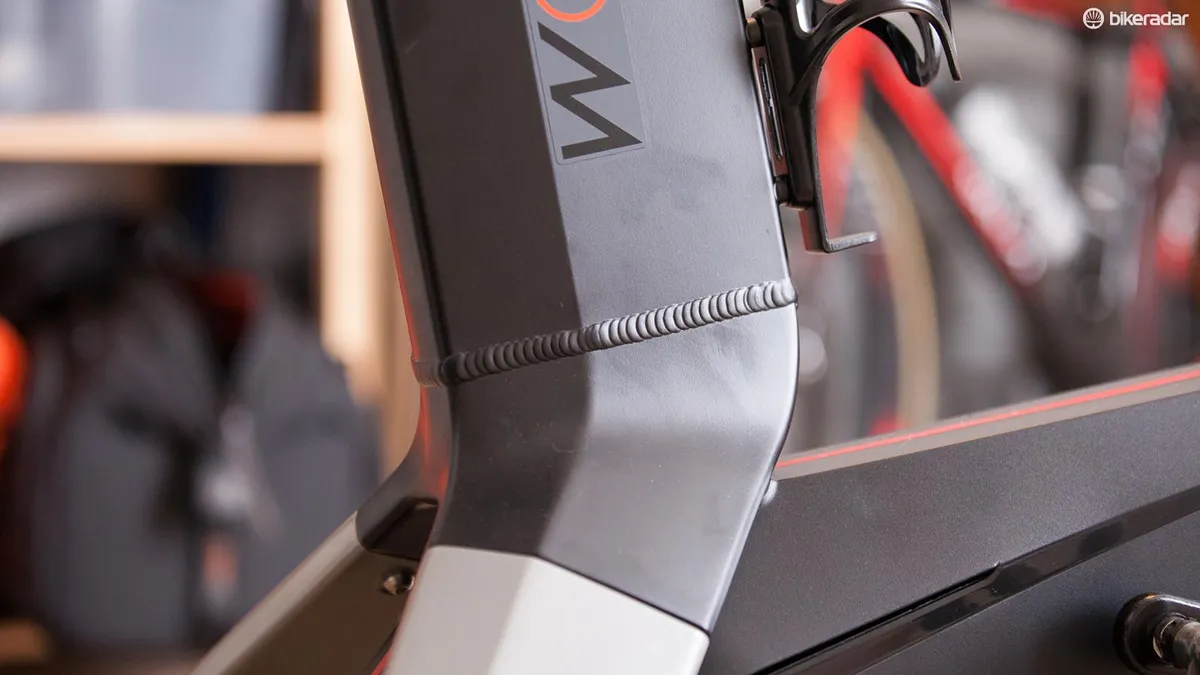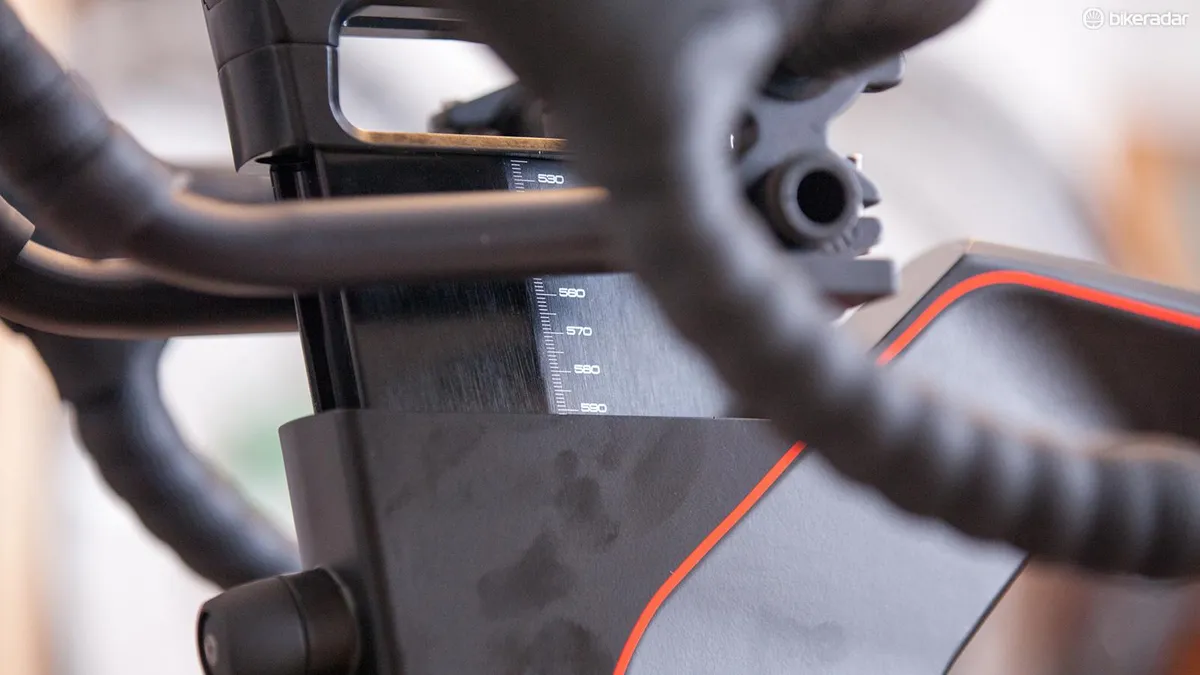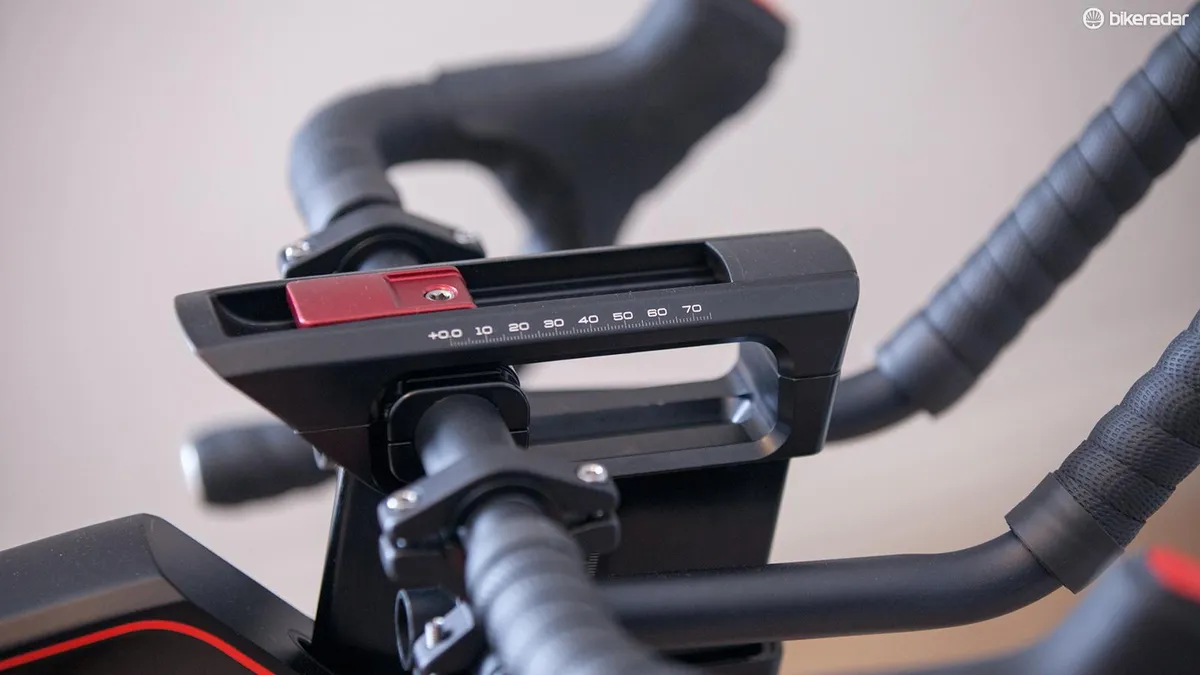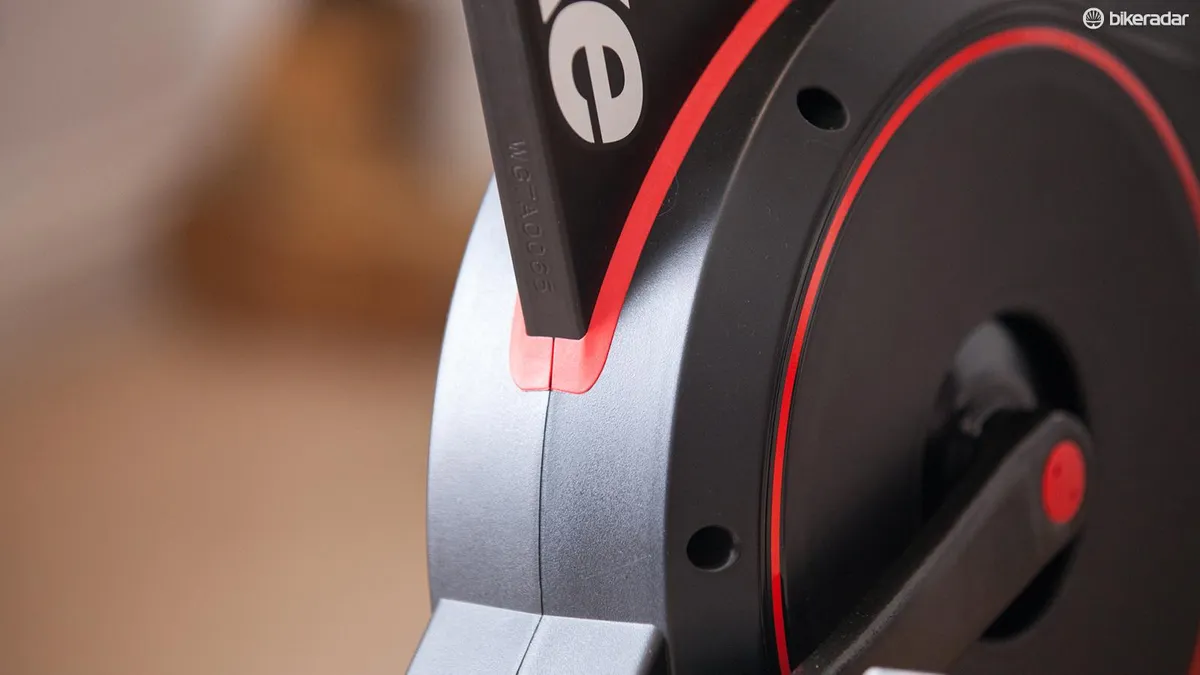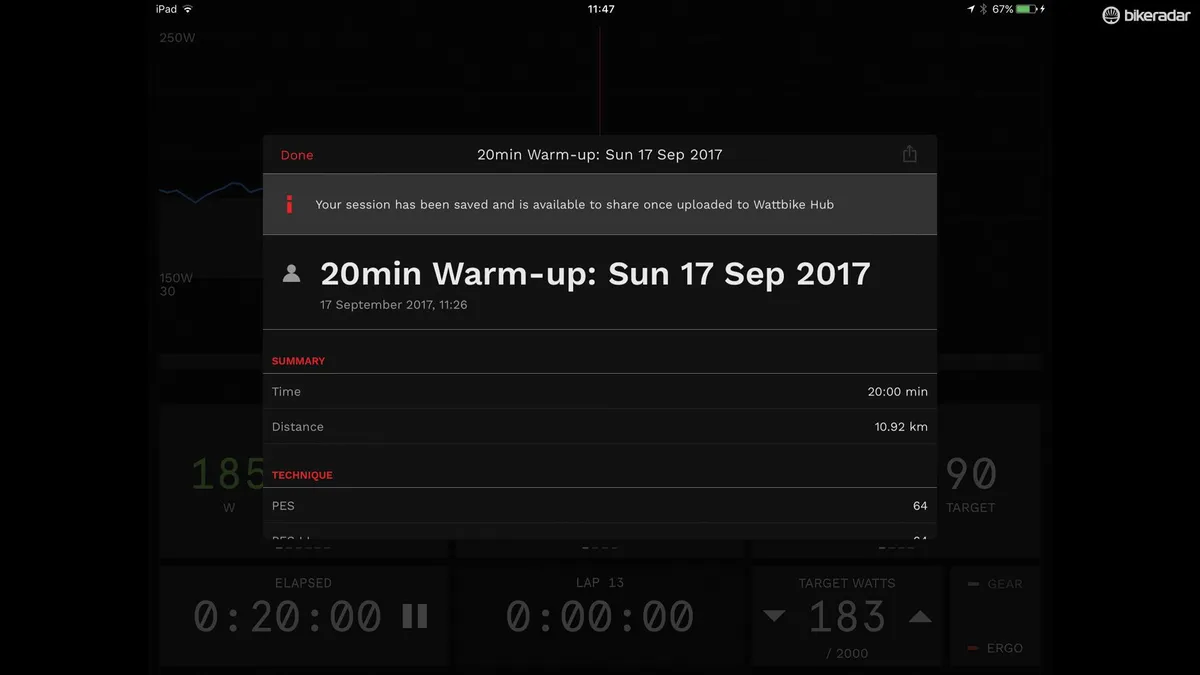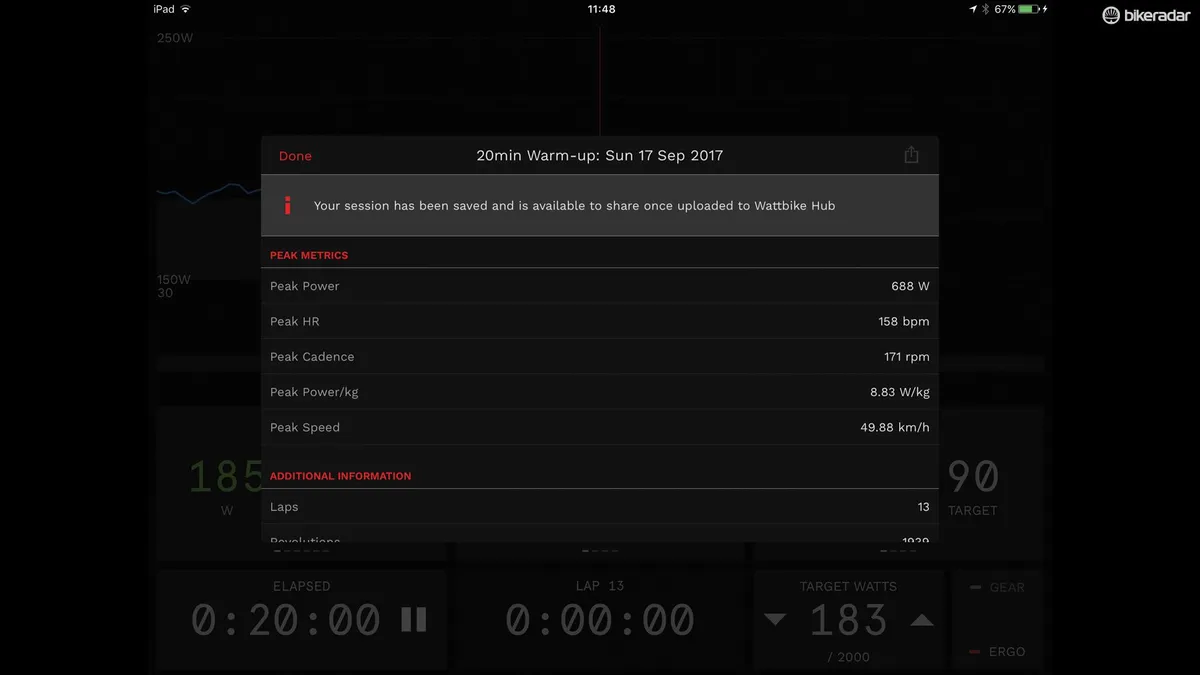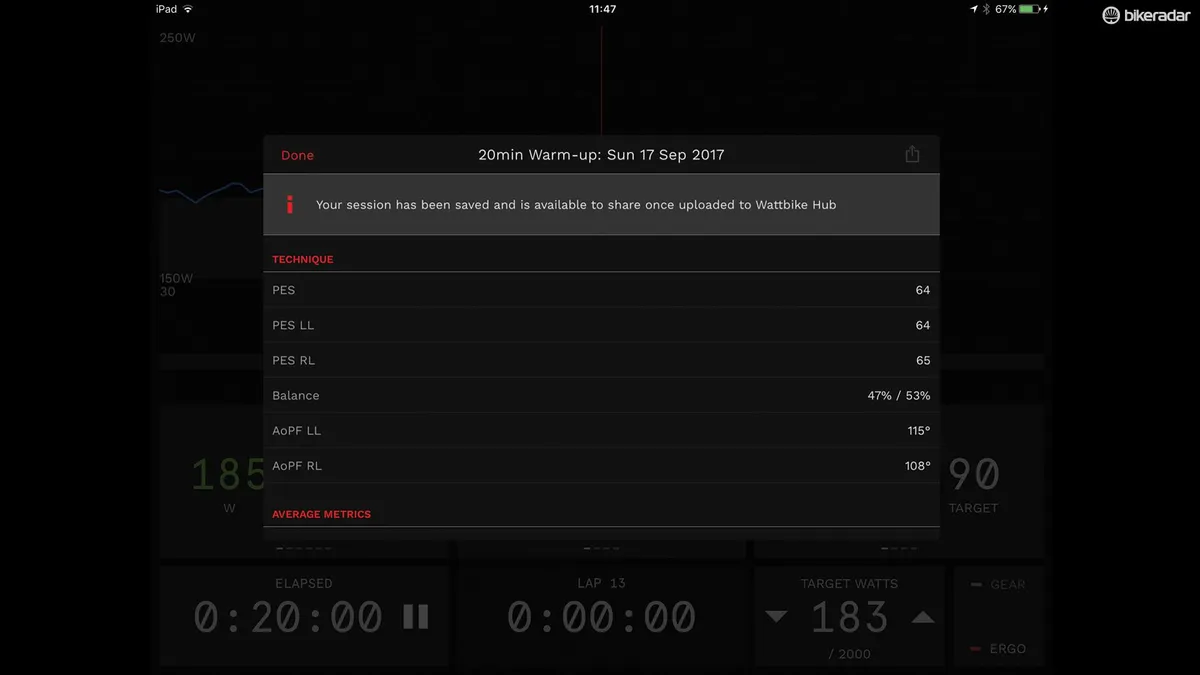This review is of the original Wattbike indoor training bike which has now been superseded for 2020.
Things have changed since Wattbike introduced its indoor training bike nine years ago. Spin classes are increasingly popular and ‘smart’ things are seemingly everywhere. So, in the Atom, Wattbike has reinvented its popular exercise bike for the everyday rider.
- Beginner’s guide to indoor training: all you need to get started
- Tips for building the ideal indoor training space
Looks-wise, the Atom makes a pleasing change from the chunkier Pro/Trainer models, and the hardware now sits on an aluminium frame which resembles an actual bike rather than the profile of an early-2000s step-through frame.
The frame features a range of adjustments including the ability to swap out the handlebars for your own preferred size should you so choose. This effectively allows a user to mimic the exact geometry of their own road or TT bike (there are included extension bars).
One benefit of the quick lever adjustment locks is that it allows you to play with bike fit without having to faff around with stem spacers, torque wrenches or multiple stems.

One of the biggest changes over the original Wattbike Pro/Trainer is the inclusion of functional electronic hoods, each with three buttons that control a variety of actions in the Hub app.
The left shifter changes the active page during a ride showing real-time Polar View pedalling analysis, power, heart rate and cadence graphs. During pre-planned workouts you get an additional page to show your current interval with power data, all displayed on your Apple or Android smart device.
The right shifter acts like a standard electronic shifter, with the higher button moving the rider into a harder gear and the lower making things easier.
The third button, on top of the shifter, switches between gear and ERGO mode (you choose a power and the resistance adjusts to keep you within a range of the target power).
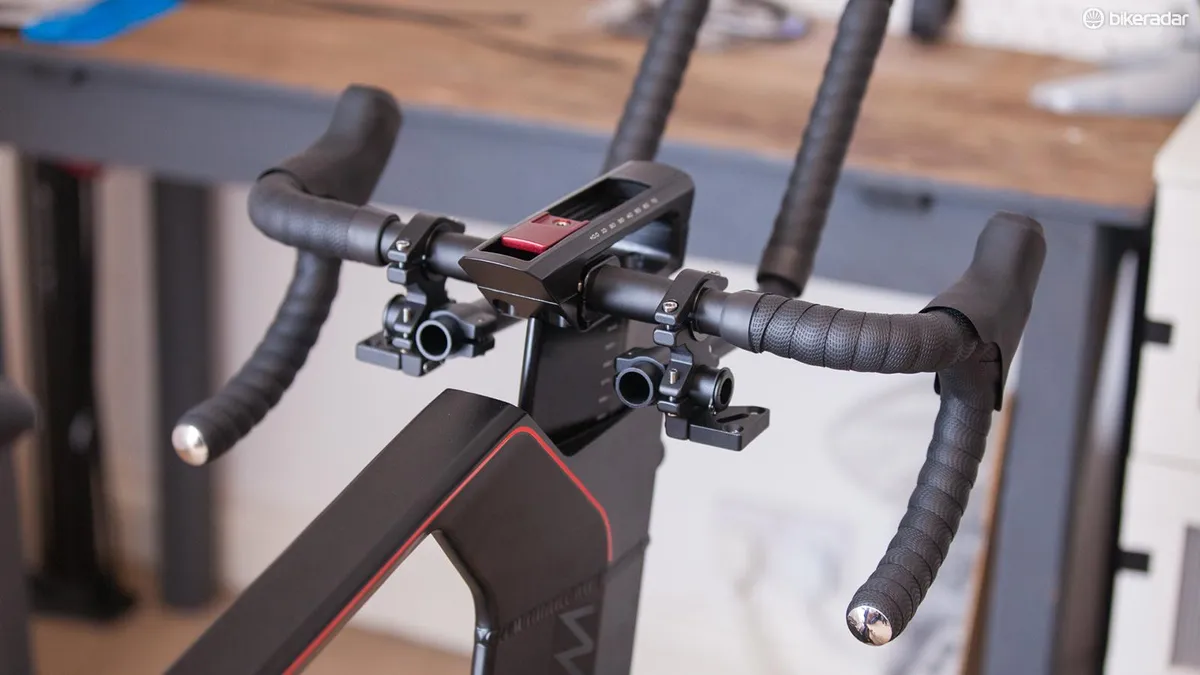
Compared to the old one-piece style of the Pro/Trainer, the new hoods are certainly an improvement in terms of ergonomics and grip.
When deep in sweaty intervals, the hood grip remained good but not amazing and at the most moist of occasions, I had to reach for the towel to put over the bars to stop myself from excessive slippage.
This wasn’t much bother when training in ERGO mode as I didn’t use the buttons much, more I relied on automatic adjustments from the bike to set the resistance.
ERGO mode worked the best for the workouts that Wattbike provides within the app. Effectively it took the guesswork out of choosing a correct gear. When transitioning between interval blocks I did notice there was a bit of lag which I had to adapt my efforts to. This was most noticeable on the super short, higher power 15 seconds or less efforts.

The included workouts are something that Wattbike has evolved to make indoor cycling a bit less boring.
There are several full multi-week training plans, a large number of one-off workouts designed to increase performance, whether it’s sprinting intervals, time trial-specific training or the dreaded three minute and 20 minute tests, which aim to tell you where your fitness levels are.
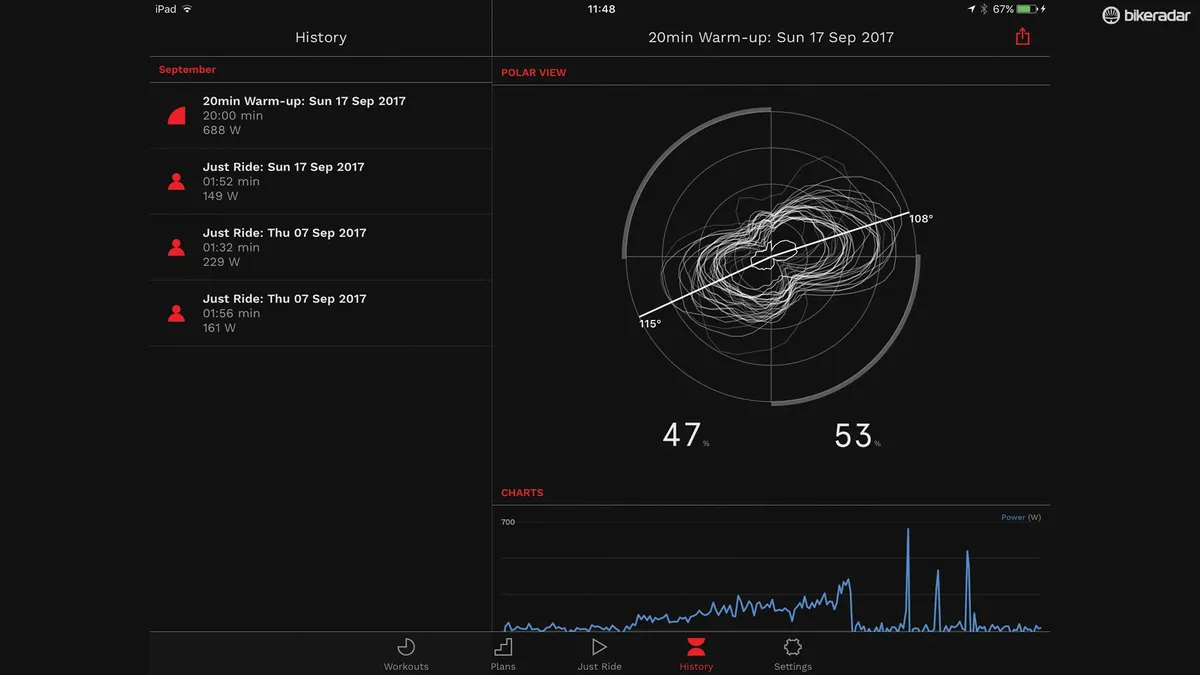
Within its app, Wattbike has included some world-famous climbs such as Mont Ventoux and Sa Calobra.
The climbs currently listed have all had their data verified and tidied up by VeloViewer, and climb segments can be added within a number of hours rather than days. This allows Wattbike to react to real-life events that it may want to replicate on its training platform.
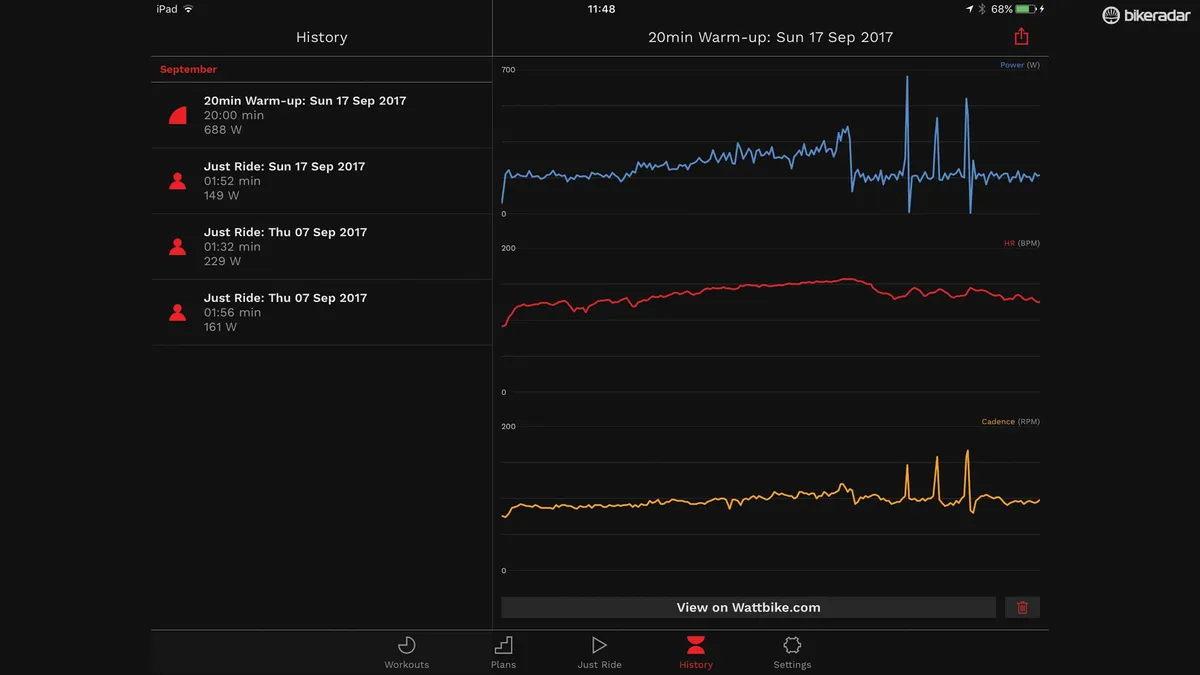
With Zwift taking off worldwide, Wattbike has fully embraced virtual cycling culture. At the time of writing, the Atom is compatible with Zwift but annoyingly you can’t see what gear you’re actually in.
One workaround is to run both Zwift and the Wattbike on separate devices (I did try to multitask the two apps on my iPad but it wasn’t having any of it). As a result I would love to see Zwift return the integration, allowing users of the Atom to see their current gearing in-game.
Speaking of, the current gear range for the Atom is, by default, equivalent to a 52/36 chainset and 11-28 cassette. The fact that the Atom is firmly aimed at a much wider consumer level, and therefore abilities, this certainly limits what some users may be able to accomplish during a training session (Mont Ventoux is no easy simulated ride at 21.12km in length and an average gradient of 7.4 percent).
Wattbike says that after testing it's included a second range of gearing only for the simulated climbs and includes more options at the lower end — though no specific range was given.
Overall, the Atom is an impressive improvement over the original iteration. Embracing third party integration alongside the redesign makes for a very attractive, high quality training package, but it is certainly at the premium end of home training setups.
